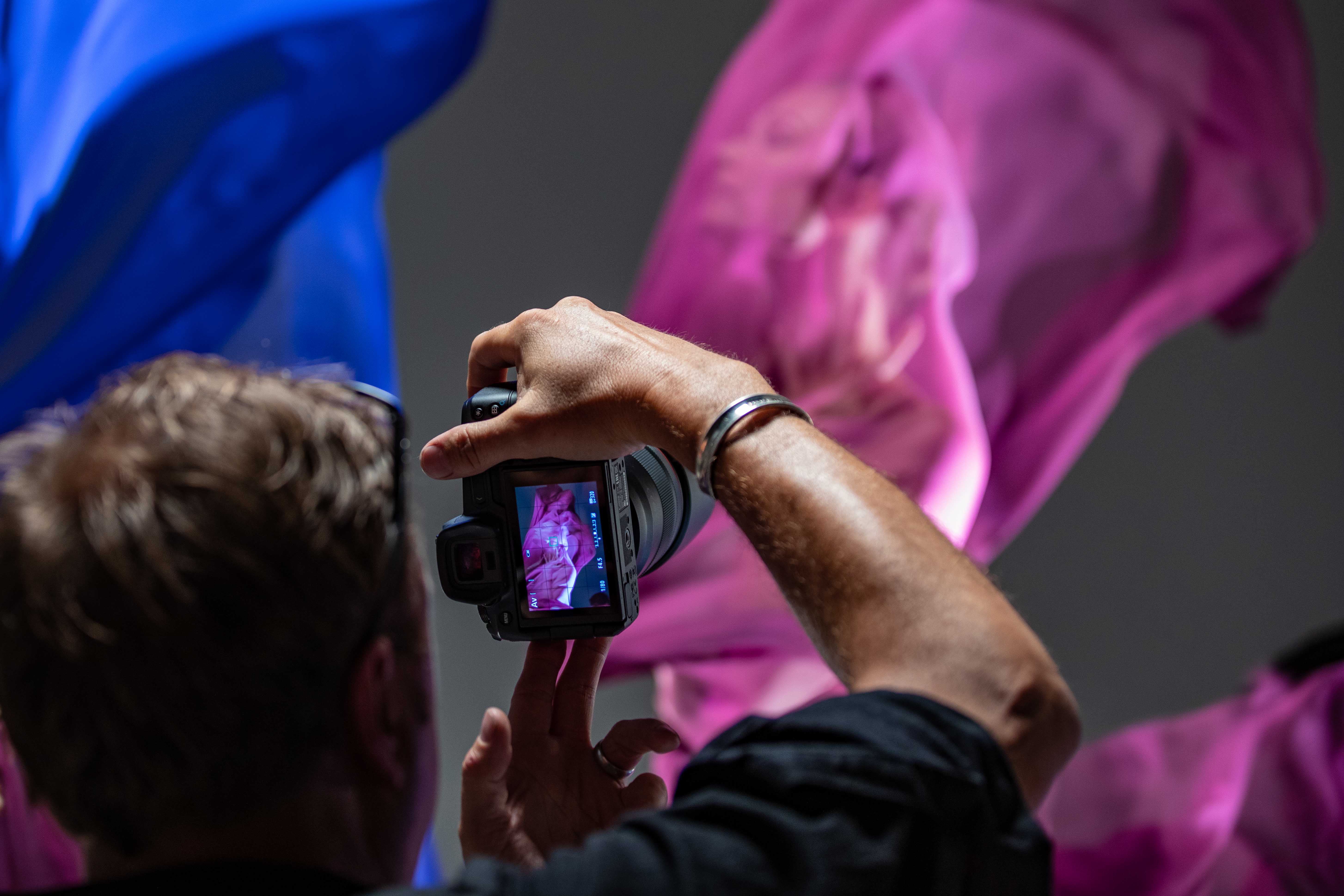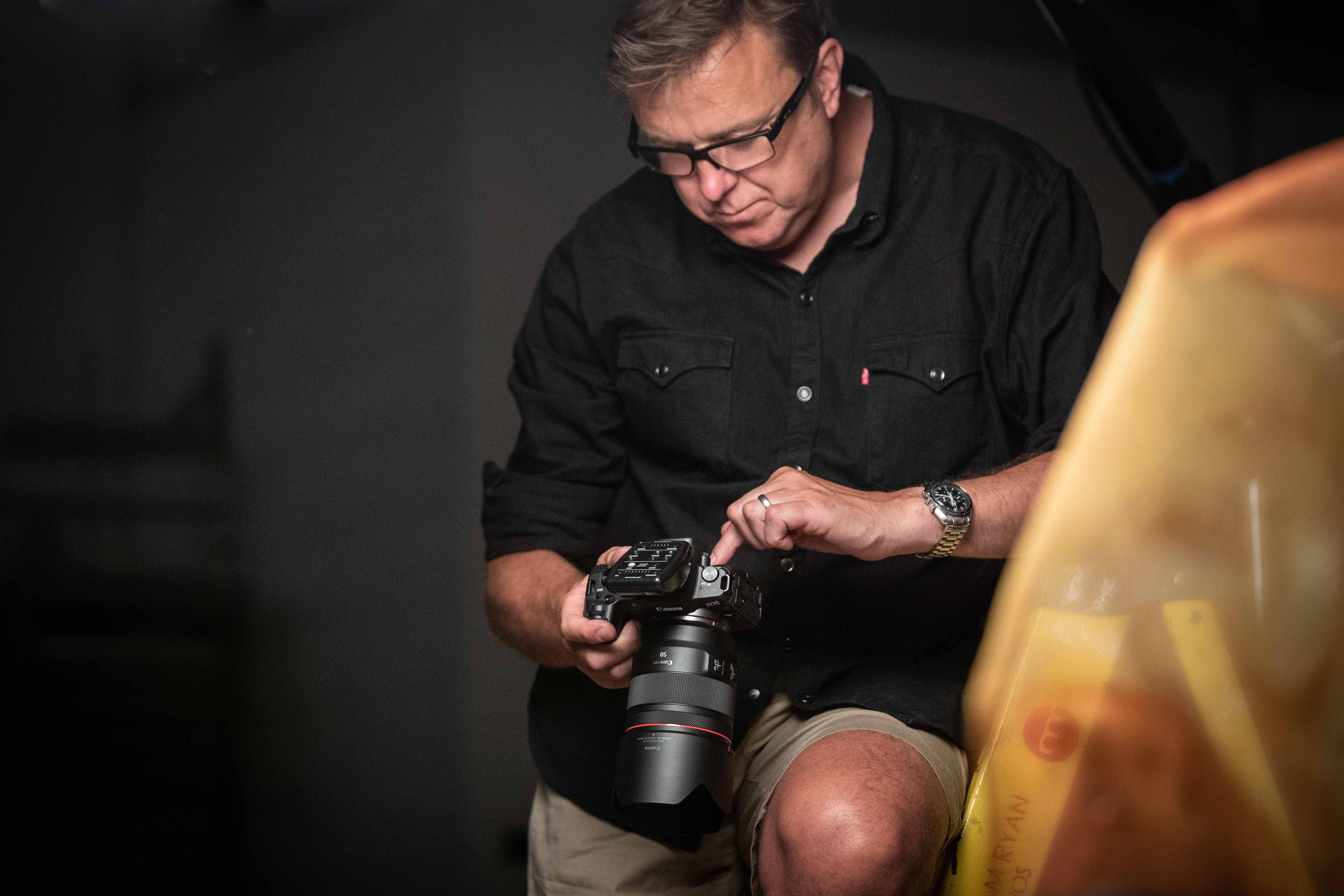
Clive Booth is a Canon Ambassador who has worked as a fashion and portrait photographer for over a decade. But his latest commission came with a very specific problem. How do you represent a ballet in a single static image?
He was commissioned to create promotional photos for a new production by the Birmingham Royal ballet. At the same time, and completely by chance, Booth was approached by Canon to work on the launch of their new top-secret full frame mirrorless camera – the EOS R. After reviewing the specification of the new camera, Clive decided to combine the two projects, having recognised the EOS R would be the perfect camera to capture his creative vision.
The ballet in question was Fire and Fury, inspired by the Turner painting Burning of the House of Lords and Commons. That painting depicts the fire that broke out in the Houses of Parliament in 1934, with great flames dwarfing the London skyline.
Those very flames are referenced in Fire and Fury’s dancers’ flowing, flame-coloured costumes. But how could Booth distil this into a single image?
After toying with the idea of a digital composite or using real flames, he came upon the solution: silk. Two of the ballet company’s dancers were sheathed in great sheets of translucent silk, sculpted into billowing flames by fans blowing air at a rate of 4000 cubic feet per minute.
The results are beautiful, making the dancers appear engulfed in flame. The photographic challenges posed by the shoot also show off what the Canon EOS R is capable of.

The power of full-frame mirrorless
As Booth used constant lighting rather than flash, the light level was relatively low throughout. It was a true test for the EOS R’s full-frame sensor and new RF system lenses, as the camera still had to be able to shoot at low ISO settings to keep noise low enough for large prints.
However, the shoot also demanded a fairly fast shutter speed, to avoid the rapidly-moving silk becoming a blur of motion. Using relatively low ISOs at high shutter speeds, in dimmer lighting, is a test for any camera. As you can see, the Canon EOS R passed the test with ease.
A new age of EOS
Booth used the new Canon RF 24-105mm f/4L IS USM and RF 50mm f/1.2L USM lenses for this shoot. Both are native to the new system, and the 50mm in particular offers both incredible sharpness across the frame and an excellent ability to deal with low light conditions.
The relatively compact frame also makes handheld use in a fast-moving scene like this easier. “Whatever’s going to enable you to do that quicker and more efficiently, of course, you’re going to grab that,” says Booth.
The Canon EOS R’s 8fps burst shooting is also particularly useful for this kind of photography, where each fraction of a second results in a different shape of silken flame. Being Canon’s most customisable camera to date, the EOS R’s control ring and multi-function bar both allow a range of functions when set up. Other parts of the hardware open up ways for quick and dynamic shooting, too. The rear touch bar on the back can be programmed to let you rapidly review the results from such a burst.
Canon’s EVF can also make dark scenes look brighter and clearer than they appear to the naked eye. “In the EVF it’s not dark, you can see everything,” says Booth.
The fully articulated screen is touch sensitive too. You can shoot from above or below head height, see the image clearly and activate the shutter with a quick tap of the display.

A more versatile camera
The Canon EOS R is a full-frame mirrorless camera with a 30-megapixel full-frame sensor, advanced 5655 position autofocus system and 100 - 40000 ISO range (102400 expanded).
As it is a new system, the EOS R has its own range of lenses. The RF 24-105mm f/4L IS USM “kit” lens will soon be joined by the RF 50mm f/1.2L USM, the RF 35mm f/1.8 IS Macro STM and RF 28-70mm f/2L USM lens, with constant f/2 max aperture throughout the range.
You’re not limited to RF lenses, though. The Canon Lens Mount Adapter lets you use the huge array of EF & EF-S lenses made for Canon’s APS-C and full-frame DSLRs.
Canon also makes versions of the adapter with either a control wheel or drop-in slot for filters.
The Canon EOS R takes much-loved parts of the company’s DSLRs, and combines them with the portability and flexibility of mirrorless cameras. “Putting the 5D Mark IV down and picking the EOS R up, it just feels like a progression in a way that you can see, you know, this is really the future of photography,” says Booth.
“A product like this, it sort of reinvigorates you and gets you excited about photography in a new way.”
Find out more about the Canon EOS R and RF lenses at: canon.co.uk/eos-r

Sign up for breaking news, reviews, opinion, top tech deals, and more.